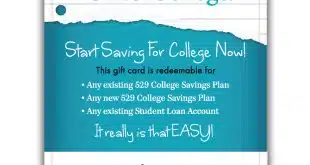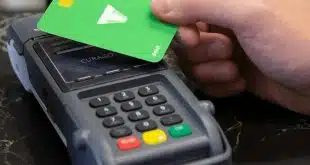By Karen Epper Hoffman
Disbursing government benefits via prepaid cards has become an increasingly popular outlet for public agencies seeking operational efficiency and banks hoping to find new avenues to revenue and client retention.
For the beneficiaries of government benefits, “getting carded” is arguably a good thing.
Over the past decade, state and federal government agencies have been moving from disbursing payments via check to increasingly electronic means, namely direct deposit into an existing bank account or a prepaid card.
At present, almost all states at a minimum offer consumers the option of having child-support funds provided on a prepaid card, and more than 80% do the same for those receiving unemployment insurance.
And more and more benefits programs—including Temporary Assistance for Needy Families (TANF), workers’ compensation, Social Security, and veterans’ benefits—are offering or even mandating this method of payment for their beneficiaries.
“It certainly is the driver of growth in this industry,” says Ron Hynes, group executive for global prepaid solutions for MasterCard Inc. “All facets of the business are humming along quite nicely.”
Indeed, prepaid itself on the whole is one of the fastest-growing areas of payments. And, the sub-segment of prepaid cards for government disbursements is arguably growing even more swiftly than prepaid on the whole. In 2009 and 2010 government programs accounted for about one-third of all loads on open-loop prepaid cards, according to Mercator Advisory Group Inc.
“The government prepaid space has grown a little faster than some other categories [of prepaid],” says Nora Arpin, director of government electronic solutions for Comerica Bank. “Government entities are all looking for ways to save money … and prepaid cards offer the benefits of direct deposit [for beneficiaries] without a bank account.”
Margaret Scopelianos, executive for specialized industries, including government card programs, at Bank of America Merrill Lynch’s Treasury Solutions, agrees. “The momentum in the market has been building over the past several years with double- and triple-digit growth, developing into one of the larger segments within the prepaid industry,” she says.
It’s not just that there are more states that are using prepaid cards for their benefits issuance; most have expanded the depth and breadth of usage. Less than five years ago, roughly 39 states were issuing prepaid cards for child-support payments, according to estimates at the time from Visa Inc. (“The Check is Not in the Mail,” April 2007).
And only eight states had begun offering unemployment insurance on cards. Visa executives were reported at the time to be working on card programs with public agencies in 32 states.
Now, Visa alone is working on 79 large programs covering child support, workers’ compensation, and other benefits in 40 states, according to Steven Evans, business leader for government prepaid at the network.
“Child support and unemployment were the first,” Evans says, “but now we’re seeing [agencies look for] new opportunities anywhere there are repetitive check payments.”
Hynes reports that MasterCard is working on multiple programs in 47 states, as well as acting as the card brand on the U.S. Treasury Department’s massive Direct Express program for federal benefits.
States “have extended their interest to areas such as tax payments, payroll to employees, and distribution of disaster payments—further evidence of the longer term opportunity government payments represent for the prepaid market,” says Scopelianos.
The Feds’ Big Boost
Moving public-sector disbursements from paper to electronic is, quite simply, driven by a need for efficiency and lowering costs all around. But the need for that efficiency has been motivated, at least in part, in recent years by rising unemployment and the demand that’s placed on state agencies to more efficiently hand out unemployment-insurance benefits to more people than many states ever believed they would serve.
“Unemployment, particularly given the unfortunate state of the economy, came to the forefront in this area because of the number of individuals who have been unemployed,” says Comerica’s Arpin.
Adds Dave Turner, senior vice president at Xerox Corp.’s Affiliated Computer Services (ACS) subsidiary, which acts as a program manager or processor on dozens of state and federal prepaid card programs: “A lot of [state agencies] looking at offering unemployment insurance have now implemented it. The financial downturn took unemployment to a level few anticipated.”
Now that prepaid cards for unemployment and child-support programs have become “mainstream,” according to Turner, more agencies are asking where they can use paperless technology next.
While receiving disbursements on a card is still the consumer’s choice in many cases, more state and federal programs are moving to mandate electronic receipt of funds through prepaid cards or direct deposit. Visa’s Evans says he is seeing more states especially mandate electronic payment for child-support.
The trend toward mandated electronic payment “should become even more pronounced when the Social Security Administration ceases to provide checks altogether to beneficiaries in 2013,” says Tim Wall, managing director and global head of sales for Citigroup Inc.’s Prepaid Services. “At that time, we expect many other agencies may quickly realize the benefits of electronic payments.”
Indeed, another spark lighting a fire under prepaid’s public-sector growth is the bold announcement early this year by the Treasury Dept. that all federal benefits payments will be made electronically by March 1, 2013, under the agency’s “Direct Express” campaign.
That means that the tens of millions of recipients of Social Security and Supplemental Security Income (SSI) and veterans’ benefits, among other beneficiaries, will be receiving their monthly payments via direct deposit or prepaid card.
The Direct Express prepaid card is the default mode of payment. Comerica Bank acts as the card program’s financial agent, holding the funds, while ACS is the program manager and processor, and MasterCard is the card brand.
Arpin says there are 2 million cardholders in the Direct Express program already, and she expects that number to at least “come close to doubling” in the coming year (Trends & Tactics, October). According to Arpin, the prepaid card program currently boasts a 95% satisfaction rating among recipients.
The bank also acts as financial agent for 32 benefits programs in 15 states, with a total of 5 million cardholders. Comerica has been working on public-sector prepaid programs since 2004, when it paired with ACS on moving Georgia’s child-support program to electronic payments, the first fully mandatory program for direct deposit and prepaid cards.
“That program was so successful [that] cardholders wanted to keep the card even after they stopped receiving child support,” Arpin says. Recipients liked having the prepaid card especially because it allowed them to keep separate their child-support monies from the rest of their personal finances, she says.
MasterCard’s Hynes says that the federal government’s decision to move Social Security—the mother of all benefits programs—to prepaid cards and direct deposit will help boost the ongoing acceptance and adoption of electronic disbursements overall.
He adds that other major developments—Wal-Mart Stores Inc.’s efforts over the past two years to take paper checks out of its massive payroll by offering all-electronic payment, for example—also help ease the way.
“It’s a testament to the value cardholders have found in [programs like these],” Hynes says.
‘Big Spender’
For some banks, prepaid card disbursement programs represent opportunities to develop new, untapped revenue streams, to seal or develop relationships with government clients, and to present a more positive image with consumers—especially the unbanked.
According to Gwenn Bézard, senior analyst for Boston-based Aite Group LLC, there are still only a handful of banks that are actively pursuing business as a financial agent on these disbursement programs, and even fewer that choose to act also as the program manager and processor.
Aside from Comerica Bank, the short list includes JPMorgan Chase & Co., Citigroup, BofA, U.S. Bancorp, and Wells Fargo & Co., which inherited much of its state-benefits disbursement business with its December 2008 acquisition of Wachovia Corp.
Companies like ACS often act as processor of the transactions and/or the program manager—providing the technology platforms, managing fraud and cardholder disputes, bringing in the plastic card maker, managing the distribution and replacement of cards, and handling the marketing, according to ACS’s Turner. ACS works with more than 30 states, typically on multiple programs in each state, he adds.
Also, banks can earn fees that could help offset the roughly $25 billion in annual debit card revenue that the recent Durbin Amendment is likely to cost them, according to the Boston Consulting Group. The research firm forecasts that transaction volume on government-issued prepaid cards will top $284 billion by 2015.
Since interchange on prepaid cards used for government benefits is not regulated by the Durbin Amendment, which sets a cap on big banks’ debit-interchange fees, networks are able to set interchange. Also, banks can charge fees in some cases for certain transactions such as using foreign ATMs for cash withdrawals, denied transactions, or making an excessive number of calls to the call center. At times, however, fees on public-sector prepaid cards have caused consumer backlashes that have resulted in banks reducing or eliminating charges.
Some transactions, like using the cards to pay for items or receiving cash back at the point of sale, tend to be free to the recipient. In that way, banks and program managers can also encourage desired behavior. Arpin describes these cards as “interchange neutral.”
Aite’s Bézard says that the banks in this arena are keen on working with government clients because the prepaid business also can lead to providing agencies a wider array of banking services. “Work with agencies and fulfilling their various needs has been good work,” he says. “Government has been a big spender in the past few years.”
Scopelianos of Bank of America adds that, “Government prepaid card programs present a good opportunity to provide a comprehensive treasury solution to our clients.”
‘Mainstreaming Experience’
For agencies, the cost-cutting efficiency of replacing paper checks with reloadable prepaid cards is huge. Federal agencies will save a dollar for every payment they make via prepaid card instead of a check, according to Hynes.
“Cost savings is the largest driver,” adds Visa’s Evans.
Smaller, less-efficient state governments are likely to save even more with the switch, he adds. Turner of ACS has seen estimates that peg the overall cost savings at between $1 and $8 per disbursement by removing the monthly cost of check stock, printing, and postage. Cards also eliminate unquantifiable costs, which include dealing with calls from beneficiaries who have had a check lost or stolen, Turner adds.
“Public-sector clients quickly realize the efficiencies both in terms of processes and costs when moving away from paper-check payments to electronic payments and prepaid cards,” says Citi’s Wall. “Depending on the number of paper checks issued each month or year, the savings for public-sector agencies could be very substantial.”
For the beneficiaries themselves, receiving payments on a prepaid card gives them the same fraud protections as with any other branded debit card.
“This is great for beneficiaries because there is less fraud than checks because our cards offer zero liability if the card is lost or stolen, and they can use their cards anywhere Visa is accepted,” says a spokesperson for Wells Fargo. The bank works with ACS on six prepaid debit benefits programs.
Also, for recipients that don’t already have a bank account, the prepaid card gives them access to banking services and the ability to make non-cash payments, as well as to save themselves exorbitant check-cashing fees charged by nonbanks.
“On the recipient side, there’s clearly a number of underserved and under-banked [consumers] … this is a mainstreaming experience for them,” says Evans.
For some consumers, the prepaid card is a budgeting tool, since they can use it to more easily track their payments and how much money they have left, according to Arpin. “It gives them more of a sense of financial empowerment,” she says.
So while many government programs are in contraction mode as they struggle with crimped tax revenues and higher expenses, it’s a safe bet that prepaid benefits cards will be in expansion mode for the foreseeable future.





